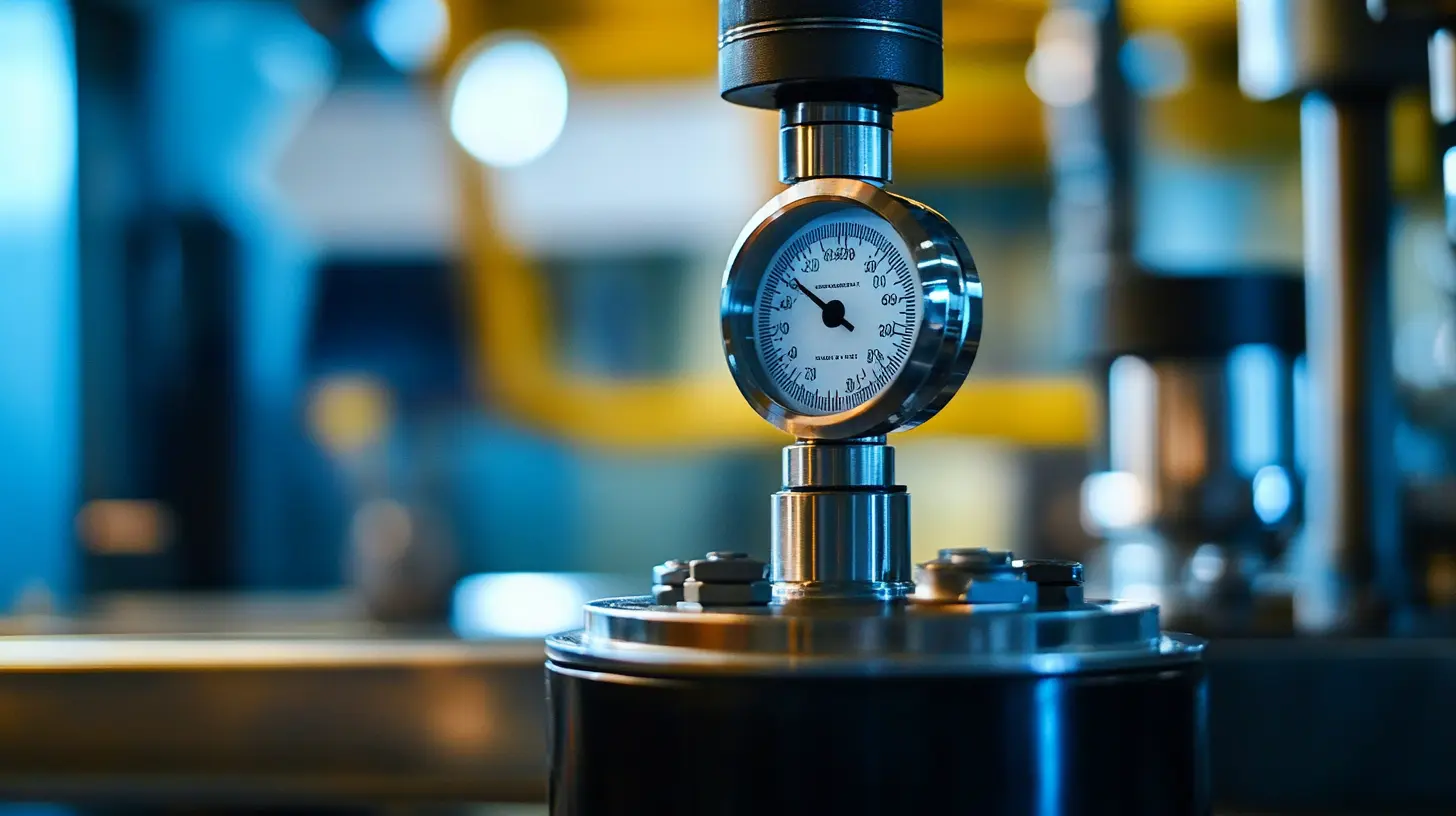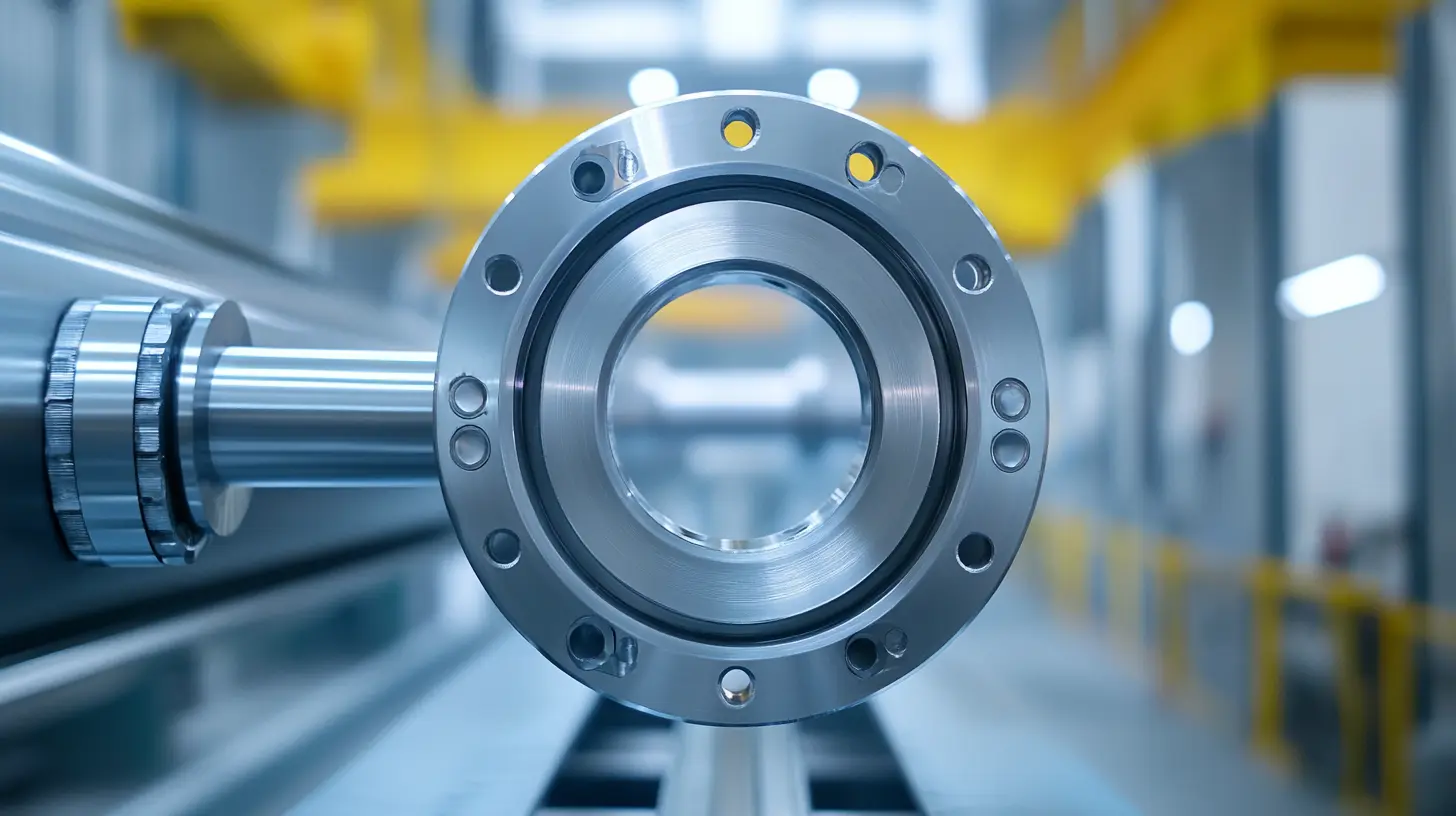 info@loadcellsensor.com
info@loadcellsensor.com 
-
Home
-
Products
-
News
-
About Us
-
Contact Us
Leave Your Message
-
 CONTACT LCS TECH
CONTACT LCS TECH -
 CONTACT LCS TECH
CONTACT LCS TECH



Through Hole Load Cells lay down the foundation of many precision measurements and are thus a key technology concerning various industrial applications. These sensors are specially designed to be reliable and accurate in force and weight measurements where space is limited, and global buyers search for high-performance solutions. Thus, the uniqueness and advantages of Through Hole Load Cells must be understood so that informed decisions can be made.
We, at LCS Tech Co., Ltd., are proud of advanced strain gauging technology that has placed us at the forefront of this field. Since our establishment in 2012, we have been producing premium load cells, force sensors, and torque transducers, thus showcasing the excellence of "Made in China" to the whole world. With our products being used in over 40 countries, we strive to answer the various needs of our clients by providing innovative solutions like Through Hole Load Cells, which are suitable for an extensive range of applications.

Through hole load cells are critical components used in various machinery for industrial applications. It helps in measuring the force and weight. This type of sensor converts any force acting on it into an electrical signal making it possible for users to measure the force accurately. It is designed with a central hole which can be incorporated within machinery that has a small volume. Engineers can decide which type of through hole load cell is fit for their needs on the basic understanding of how the through hole load cell would work - through the employment of strain gauges detecting the changes in resistance when a force is applied. Application of such load cells would increase accuracy and reliability in an industry, for example, manufacturing, aerospace, and even motor vehicle industries. The recent event when pop star Olivia Rodrigo otherwise fell in a hole on stage emphasizes the need for safety through designs. Just as through hole load cells can improve performance in technical applications, so also, proper and secure application in performance spaces is critical in the prevention of accidents. Pivotal to many things, buyers around the world should also know that the job of selecting the right load cell for their projects is critical so that they can maximize safety and functionality regarding minimizing risks associated with equipment failure. This intersection of safety, design, and performance is important to all engineering aspects, from stage productions to industrial applications.

The uniqueness in design and performative aspects of through hole load cells proved a blessing to industries. These load cells are particularly designed for measuring force or weight in restricted applications and can still read accurately in confined quarters. According to a report published by MarketsandMarkets, the global load cell market is projected to reach $2.56 billion by 2025, with through-hole load cells significantly contributing to this growth due to their efficiency and reliability.
Accurate measurements of loads even under extreme stress levels are perhaps the prominent features enhancing the performance of through-hole designs. Such conditions often occur in industrial applications where the load cells are exposed to extreme operating conditions. Research and Markets conducted a survey, wherein over 40% of industries that use load cells reported the through-hole design improved accuracy and reduced errors in force measurements compared to traditional load cells.
Furthermore, through-hole load cells are extremely easy to integrate into the existing system. Their form factor, which is cylindrical, is versatile and allows for minimal modifications during installation, making them highly suited to manufacturing environments by way of retrofitting. The flexibility in application would translate into reduced time and operational disruption. Moreover, they have a strong build to provide longevity, with many manufacturers reporting up to 30% increase in operational lifetime over the other kinds of load cells. As an attractive proposition for reliable and effective solutions, through-hole load cells retain their place among the stars that push performance and efficiency in modern applications.

Through Hole Load Cells: Next Generation Load Cells: New Solution to Load Sensing Applications Industries today, his words Findings say have highly recommended through hole load cells in various applications where precision was very important in a confined space. Distinctly finding an edge when put in comparison with other load cell types, the through hole load cells mostly require no long mounting systems or alignment for measuring the load-the ideal solution for an automated system or moving environment.
Recently, it is known that most of the predictive load alleviation systems have a trend to implement at work. A good example has been Lidar technology, which enables aircraft to measure wind fields ahead and trigger on-the-fly load adjustment of control surfaces. Such forms of technology are basically a parallel development to the emerging needs of Through Hole Load Cells, yielding consistent and repeatable data for applications requiring real-time input based on external conditions.
Steady increases in the peak load demand have been observed over the years, according to PJM Interconnection, and these projections are expected to increase at about 2 percent per year until the year 2045-indicate that increasing data centers are responsible for such increases. Thus, a load-sensing solution like Through Hole Load Cells, capable of handling very high capacities with accuracy and minimum interference, could ineluctably be necessitated by the increased projections.
The continuing trend of transportation of super loads across states is a good case in point of extremely good load measurement systems needed for such purposes. It states that super loads do not logistically move smoothly in regions such as Ohio. Through Hole Load Cells add up to the precision needed to monitor these gigantic masses accurately, ensuring effectiveness and safety along the route. The trend is fast developing with all the major potential benefits of future technology for management of industries; the future trend seems so focused on organizing advanced load measurement technologies to meet the ever-increasing demand of the global market.

Through hole load cells are important components in various industrial applications, serving as an accurate means for measuring force, weight, or load. Unique designs allow them to be highly durable and accurate withstanding high levels of force. One of the top applications for through-hole load cells is in manufacturing, which plays a large part in quality control. Through such monitoring, manufacturers can weigh different materials and products, helping in production standards and resource use optimization while avoiding damage to some resources during the failure of any one of them.
Another major application of through hole load cell is in the aerospace sector. These load cells test the strength of components and structures under predetermined stress conditions for their flights, safety, and reliability in flying. They also act well under very heavy loads hence they are better suited for testing equipment that can hold rigorous aviation standards. Real-time data capture and integration into automated systems for streamlined testing procedures are also made possible by through hole loads.
In construction and civil engineering, through hole load cells are also critically important for assessing structural integrity. They are used for load tests on bridges and buildings, among several other applications, and they provide valuable data for safety evaluations and planning. Their robustness allows them to be used in the many different environments that characterize their application; hence they are often a good choice for the long-term monitoring of structures over the time. The versatility and precision of these through-hole load cells ensure they continue to be relevant tools across various sectors.
The uniqueness of through-hole load cells is gaining them very much importance with international buyers from different industries. These cells provide trusted solutions for applications requiring accurate force and weight measurements and are thus widely found in use either for industrial applications or commercial applications. The compactness of the through-hole load cells enables them to be configured effortlessly into machines without compromising performance. According to a recent market report, the load cell market is expected to reach nearly $3.3 billion by 2027, further indicating how important this technology will be for world trade.
The primary advantage of a through-hole load cell is increased accuracy and stability. The design of these cells minimizes the impact of outside factors like temperature and vibration, making pristine outputs a possibility. This trait is particularly important for automotive applications because weight measurement precision can directly impact both safety and performance. With technology firms moving into the automobile space, demand for advanced measurement solutions is expected to explode and drive innovation in load cell design.
Through-hole load cells, moreover, cater to versatility of applications from weighbridges to packaging. Their capacity to carry heavy loads without any deformation keeps business operations efficient. For global buyers, the investment therefore in these load cells can directly translate to their measurable benefits in terms of accuracy and reliability, thereby uplifting overall productivity in manufacturing and logistics. As industries change with time, the adoption of sophisticated measurement technologies like the through-hole load cells will be central to achieving certain strategic operational goals.
Selecting the correct through hole load cell considers several vital factors that can seriously affect its performance and application efficiency. Load cells measure force or weight, which much appreciates their accuracy, sensitivity, and small size. It would help if understood by the specifications and features found on different models to appreciate them as global buyers who aim to improve their operational capabilities.
For starters, it is necessary to ponder the load cell's strength and measurement range. Load cells come with rated capacities that, however, can range widely from a few grams to several tons. According to a very recent report from research and markets, the global load cell market is estimated to reach USD 5.2 billion by the year 2025, which means a growth of 4.7% annually compound growth rate over this period. This trend suggests that more and more people demand precision load measuring requirements in different industries like manufacturing and logistics.
Other environmental factors play a role in select type of load cells. Depending on the application, criteria like temperature ranges, humidity levels, and possible exposure to corrosive substances must be assessed by the buyer for any application. Usually, stainless steel types of load cells are well-known for their resistance to rough environments. Again, as per the latest AWS vulnerabilities reports, no emphasis can be enough when it comes to strong systems; the load cell must also be reliable to record accuracy and functionality although it is under challenges so that the risk of having operational disruptions is reduced.
Compatibility with existing systems is yet another important factor in the acquisition of a through-hole load cell. Buyers should ensure that the load cell can integrate seamlessly with existing data acquisition systems for real-time monitoring and analysis. As technologies improve and the need to maximize performance while boosting accuracy continues to rise, keeping abreast on technological advancements helps buyers make more informed choices toward improved functionality and greater economic benefits.
Having said that, the critical factor in the efficiency, durability, and longevity of a through-hole load cell is maintenance. Like many other applications in the industry, these load cells also require timely maintenance to maximize their overall utility. It should be well understood that perhaps one of the best ways of maintaining a load cell is to keep it clean. Dust, dirt, or any other contamination can interfere in their functioning, produce wrong readings, and, in the worst cases, even permanently damage the load cell. Use of a soft cloth with a mild cleaning solution helps in the maintenance of load cells quite well without causing any harm.
During maintenance, perhaps the most important part is checking environmental conditions of the load cell: high humidity, temperature discrepancies, or even corrosive environment: just some of the things that would affect performance terribly. Load cells protected with different covers should be installed to avoid these terrible conditions. Moreover, make sure to regularly check for deterioration or damages on load cell connections, which may otherwise lead to unexpected failure. Apart from that, securing electrical connections prevents corrosion and greatly enhances the life of the load cell.
Recommendation of regular calibration procedures for load cells is equally important. Calibration according to manufacturer specifications is required to ensure that at any time the load cell measures accurate values. It thus acts as a check against drifting measurements that might be due to an environmental factor. Implementing the above provisions not only maximizes the longevity of through-hole load cells but also ensures their applicability across a range of applications, which will surely give the buyers peace of mind because they invest in such an important technology globally.
Through-hole load cells are increasingly gaining importance due to their unique design and capabilities in various industries. Looking forward to trends in technology and applications of through-hole load cell, several emerging key developments are anticipated to transform the whole concept. According to the findings in the market report by MarketsandMarkets, the load cell market is thought to increase globally up to USD 1.4 billion by 2026 at a CAGR of 4.5%, confirming the increasing needs and versatility of through-hole load cells in many sectors, including automotive, aerospace, and manufacturing.
Through-hole load cells show the major trends of integration of advanced materials and sensor technologies. Transitioning to lighter and stronger materials, such as carbon fiber composites, will not only improve load cell performance but also add to the lifespan of the type of devices that need to work under extreme loads. On top of that, the integration of smart technologies and IoT allows for monitoring of real-time data and enhanced accuracy. As stated in a report released by Research and Markets, the smart load cells segment is anticipated to grow at a rate exceeding 10% through 2025, underscoring that the industry is shifting toward smart and very efficient solutions for load measurement.
The second biggest push for through-hole load cells is automation in manufacturing processes. Applications for load cells go from product quality control to weighing in automated systems. The demand for reliable load measurement tools is set to increase. As such, the focus on electric vehicle production and renewables is expected to boost the market for special load cells, especially in high-precision applications where conventional load cells may not meet the requirements. With changes in industries, through-hole load cells will be in the limelight as prime tools for better operational efficiency and precision.
Through hole load cells are used for precise measurement of force, weight, or load in various industrial applications, including manufacturing, aerospace, construction, and civil engineering.
They enable manufacturers to monitor the weight of materials and finished products, helping to maintain consistent production standards and optimize resource use.
They test the strength of components and structures under various stress conditions, ensuring safety and reliability in flight while providing real-time data for efficient testing processes.
Key considerations include the load cell's capacity and measurement range, environmental factors like temperature and humidity, and compatibility with existing systems.
They enhance accuracy and stability by minimizing the effects of external factors, such as temperature and vibration, ensuring consistent data output.
Their compact design allows for easy integration into existing machinery without compromising performance, making them suitable for various applications.
Industries such as automotive, manufacturing, logistics, and packaging are increasingly adopting through hole load cells due to their precision and reliability.
Stainless steel load cells are often favored for their durability and resistance to corrosion in challenging environments.
The global load cell market is expected to reach approximately $5.2 billion by 2025, growing at a CAGR of 4.7%, driven by rising demand for precise load measurement.
Real-time monitoring allows for immediate data analysis and operational adjustments, enhancing efficiency and productivity in various applications.
